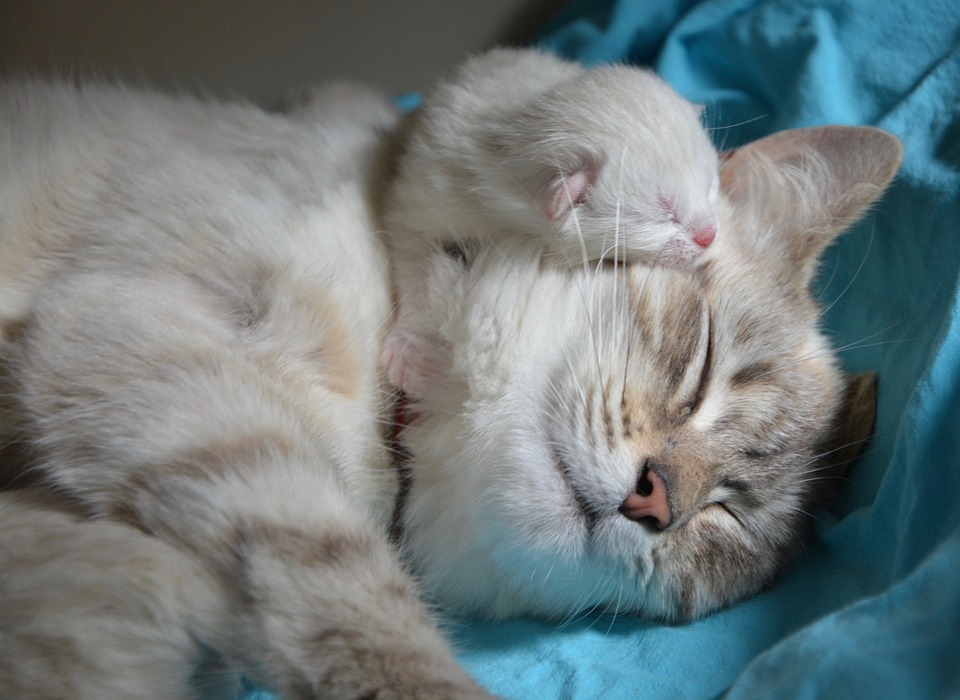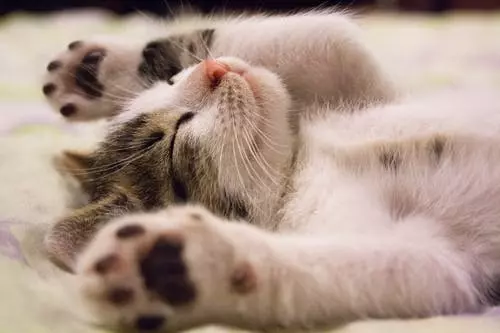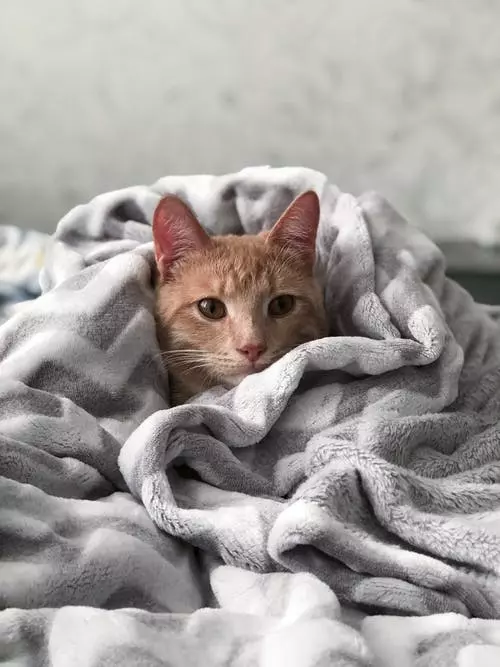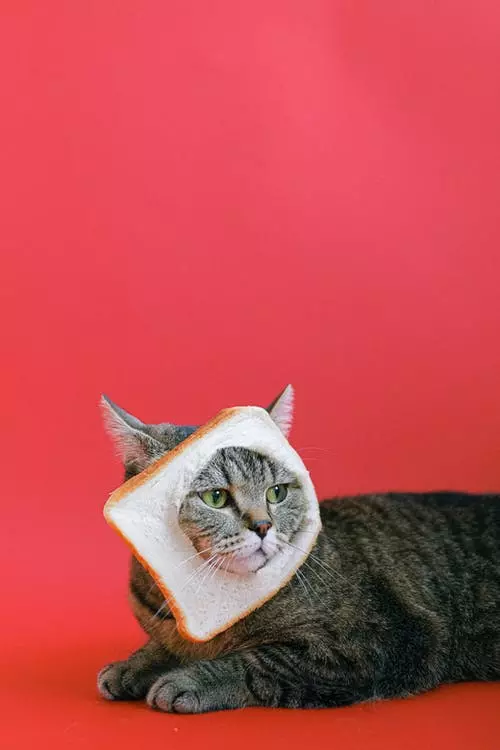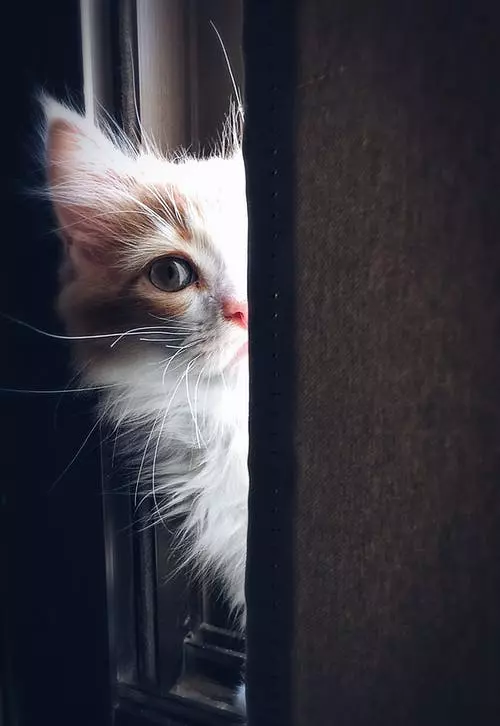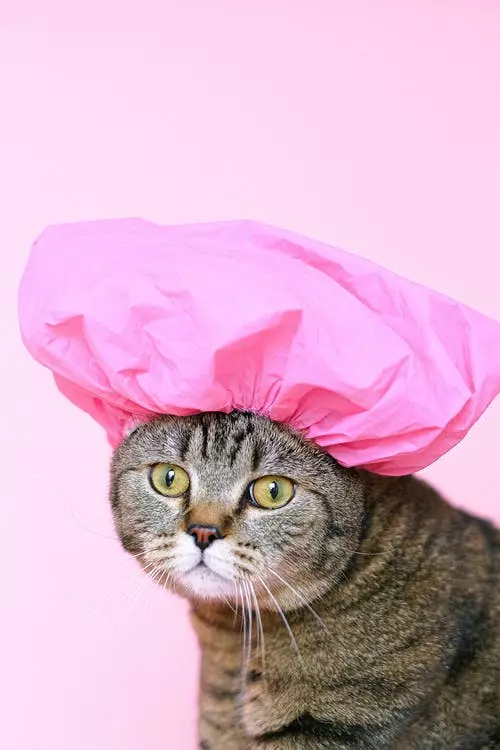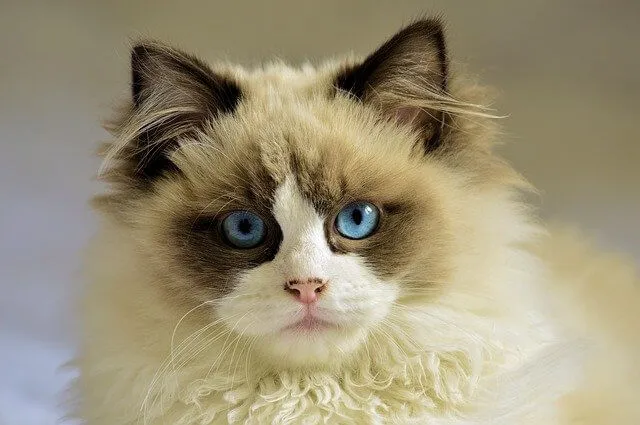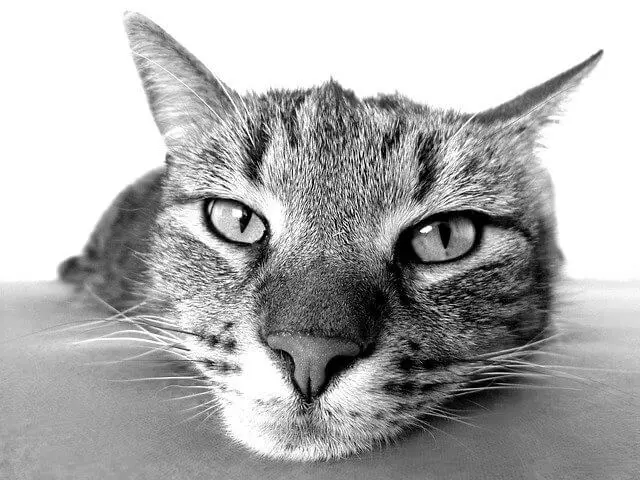Cats are fascinating creatures with a rich and complex language of their own. While they may not speak in words, their body language can reveal a lot about their thoughts, feelings, and intentions. As cat owners, it is essential to understand and interpret their body signals to better communicate and bond with our feline companions. In this article, we will explore the various aspects of cat body language and provide insights on how to decode their mysterious ways.
The tail is a significant indicator of a cat’s mood and intentions. By paying attention to its movements, you can gain valuable insights into your cat’s emotional state. Here are some common tail positions and their meanings:
1. Straight and Upright: When a cat’s tail is held high and straight, it signifies that they are feeling confident, content, and friendly. This position is often seen when a cat is greeting their human or another cat.
2. Puffed-Up Tail: A puffed-up tail indicates that a cat is feeling threatened or scared. It is a defensive posture used to make themselves appear larger and more intimidating.
3. Tucked Between Legs: If a cat’s tail is tucked tightly between their legs, it is a sign of fear or submission. They may be feeling anxious or trying to avoid any potential conflict.
4. Flicking Tail: When a cat’s tail is twitching or flicking rapidly, it usually indicates agitation, annoyance, or anticipation. It’s a warning sign that they might lash out if provoked further.
Cats have highly expressive ears that can convey a range of emotions. By observing their ear positions and movements, you can gain valuable insights into their mood and intentions. Here are some common ear positions and their meanings:
1. Forward and Upright: When a cat’s ears are forward and upright, it usually means they are relaxed and attentive. They are likely in a friendly and playful mood.
2. Flattened Back: Flattened ears pressed tightly against the head suggest fear, aggression, or extreme caution. It’s a clear signal that the cat is feeling threatened and may respond defensively.
3. Slightly Back or Sideways: If a cat’s ears are slightly back or sideways, it indicates uncertainty or mild anxiety. They may be evaluating a situation or feeling cautious.
4. Rapid Twitching: Rapid ear twitching can indicate a heightened state of alertness or irritation. It’s essential to give your cat space and avoid overstimulating them during this time.
A cat’s eyes can speak volumes about their emotions, particularly through the dilation of their pupils. Understanding what their eyes are telling you can help you respond appropriately to their needs. Here’s a breakdown of pupil dilation and its meaning:
1. Constricted Pupils: When a cat’s pupils are small and constricted, it usually indicates that they are feeling tense or agitated. It may be a sign of fear, stress, or discomfort.
2. Dilated Pupils: Dilated pupils, where the black part of the eye expands, often suggest excitement or arousal. It can also indicate that a cat is feeling threatened or preparing for a predatory attack.
3. Uneven Pupil Sizes: If you notice a significant difference in the size of the cat’s pupils, it could be a sign of injury or underlying health issues. In such cases, it’s crucial to consult a veterinarian promptly.
Now, let’s address some frequently asked questions about cat body language:
Q1. How can I tell if my cat wants to be left alone?
A1. Cats often display clear signs when they want some alone time. Look for flattened ears, a swishing tail, dilated pupils, or attempts to hide or escape from your presence.
Q2. Why does my cat lick me and then bite me?
A2. Licking followed by biting can be a sign of overstimulation. It’s essential to recognize when your cat has had enough and needs a break from petting or interaction.
Q3. What does it mean when my cat kneads me with their paws?
A3. Kneading, where cats rhythmically push their paws against a surface, is often associated with contentment and relaxation. It’s a behavior reminiscent of their kittenhood when they stimulated milk flow while nursing.
Q4. How can I tell if my cat is feeling anxious or stressed?
A4. Signs of anxiety or stress in cats include excessive grooming, hiding, decreased appetite, increased aggression, litter box issues, or excessive vocalization. It’s crucial to identify the underlying causes and provide a calm and secure environment for your cat.
Understanding and interpreting cat body language is an invaluable skill for every cat owner. By paying attention to their tail movements, ear positions, and pupil dilation, you can gain a deeper understanding of your feline companion’s emotions and needs. Remember, every cat is unique, so take the time to observe and bond with your furry friend to create a stronger, more fulfilling relationship.

